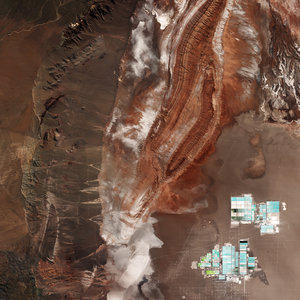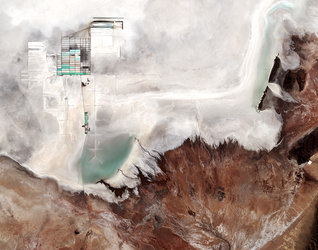Accept all cookies Accept only essential cookies See our Cookie Notice

About ESA
The European Space Agency (ESA) is Europe’s gateway to space. Its mission is to shape the development of Europe’s space capability and ensure that investment in space continues to deliver benefits to the citizens of Europe and the world.
Highlights
ESA - United space in Europe
This is ESA ESA facts Member States & Cooperating States Funding Director General Top management For Member State Delegations European vision European Space Policy ESA & EU Responsibility & Sustainability Annual Report Calendar of meetings Corporate newsEstablishments & sites
ESA Headquarters ESA ESTEC ESA ESOC ESA ESRIN ESA EAC ESA ESAC Europe's Spaceport ESA ESEC ESA ECSAT Brussels Office Washington OfficeWorking with ESA
Business with ESA ESA Commercialisation Gateway Law at ESA Careers Cyber resilience at ESA IT at ESA Newsroom Partnerships Merchandising Licence Education Open Space Innovation Platform Integrity and Reporting Administrative Tribunal Health and SafetyMore about ESA
History ESA Historical Archives Exhibitions Publications Art & Culture ESA Merchandise Kids Diversity ESA Brand Centre ESA ChampionsLatest
Space in Member States
Find out more about space activities in our 23 Member States, and understand how ESA works together with their national agencies, institutions and organisations.
Science & Exploration
Exploring our Solar System and unlocking the secrets of the Universe
Go to topicAstronauts
Missions
Juice Euclid Webb Solar Orbiter BepiColombo Gaia ExoMars Cheops Exoplanet missions More missionsActivities
International Space Station Orion service module Gateway Concordia Caves & Pangaea BenefitsLatest
Space Safety
Protecting life and infrastructure on Earth and in orbit
Go to topicAsteroids
Asteroids and Planetary Defence Asteroid danger explained Flyeye telescope: asteroid detection Hera mission: asteroid deflection Near-Earth Object Coordination CentreSpace junk
About space debris Space debris by the numbers Space Environment Report In space refuelling, refurbishing and removingSafety from space
Clean Space ecodesign Zero Debris Technologies Space for Earth Supporting Sustainable DevelopmentLatest
Applications
Using space to benefit citizens and meet future challenges on Earth
Go to topicObserving the Earth
Observing the Earth Future EO Copernicus Meteorology Space for our climate Satellite missionsCommercialisation
ESA Commercialisation Gateway Open Space Innovation Platform Business Incubation ESA Space SolutionsLatest
Enabling & Support
Making space accessible and developing the technologies for the future
Go to topicBuilding missions
Space Engineering and Technology Test centre Laboratories Concurrent Design Facility Preparing for the future Shaping the Future Discovery and Preparation Advanced Concepts TeamSpace transportation
Space Transportation Ariane Vega Space Rider Future space transportation Boost! Europe's Spaceport Launches from Europe's Spaceport from 2012Latest

Chile's salt flat
Thank you for liking
You have already liked this page, you can only like it once!
The Sentinel-2A satellite takes us to the diverse landscape of the eastern Atacama desert in South America. The region pictured lies around 200km east of the Chilean city of Antofagasta on the Pacific coast (not pictured), and is virtually devoid of vegetation.
At the top of the image we can see part of Chile’s largest salt flat, the Salar de Atacama. With an average elevation of some 2300 m above sea level, it is formed by waters flowing down from the Andes, which, having no drainage outlets, are forced to evaporate, leaving salt deposits.
It is the world’s largest and purest active source of lithium, containing some 30% of the world's lithium reserve base, and providing almost 30% of the world’s lithium carbonate supply.
The bright turquoise rectangles and squares visible along the top part of the image are evaporation ponds. Subsurface salt brines are pumped from beneath the saline crust in two different areas. In one of them, extracted salt brines have unrivalled concentration levels of potassium and lithium. In the other, the brines obtained contain high concentrations of sulphate and boron.
In the lower right part of the image we can see the Socompa stratovolcano, known for its ‘debris avalanche deposit’ where the land collapsed on its western rim some 7000 years ago. The area has since been partially filled by lava, and we can see dark lava flows around the volcano.
The multispectral instrument on Sentinel-2 uses parts of the infrared spectrum to analyse mineral composition where vegetation is sporadic. In this false-colour image, the intense shades of brown and orange come from the use of an infrared part of the spectrum leading to an exaggeration of colour intensity.
This image – also featured on the Earth from Space video programme – was captured by Sentinel-2A on 8 March. The satellite is the first in the twin satellite Sentinel-2 mission for Europe’s Copernicus programme, and carries a wide-swath high-resolution multispectral imager with 13 spectral bands, for a new angle on our land and vegetation.
-
CREDIT
Contains modified Copernicus Sentinel data [2016], processed by ESA -
LICENCE
CC BY-SA 3.0 IGO or ESA Standard Licence
(content can be used under either licence)

Salar de Atacama, Chile

Atacama minerals

Uyuni salt flat, Bolivia

Earth from Space: Chile’s salt flat















 Germany
Germany
 Austria
Austria
 Belgium
Belgium
 Denmark
Denmark
 Spain
Spain
 Estonia
Estonia
 Finland
Finland
 France
France
 Greece
Greece
 Hungary
Hungary
 Ireland
Ireland
 Italy
Italy
 Luxembourg
Luxembourg
 Norway
Norway
 The Netherlands
The Netherlands
 Poland
Poland
 Portugal
Portugal
 Czechia
Czechia
 Romania
Romania
 United Kingdom
United Kingdom
 Slovenia
Slovenia
 Sweden
Sweden
 Switzerland
Switzerland
























